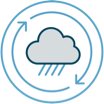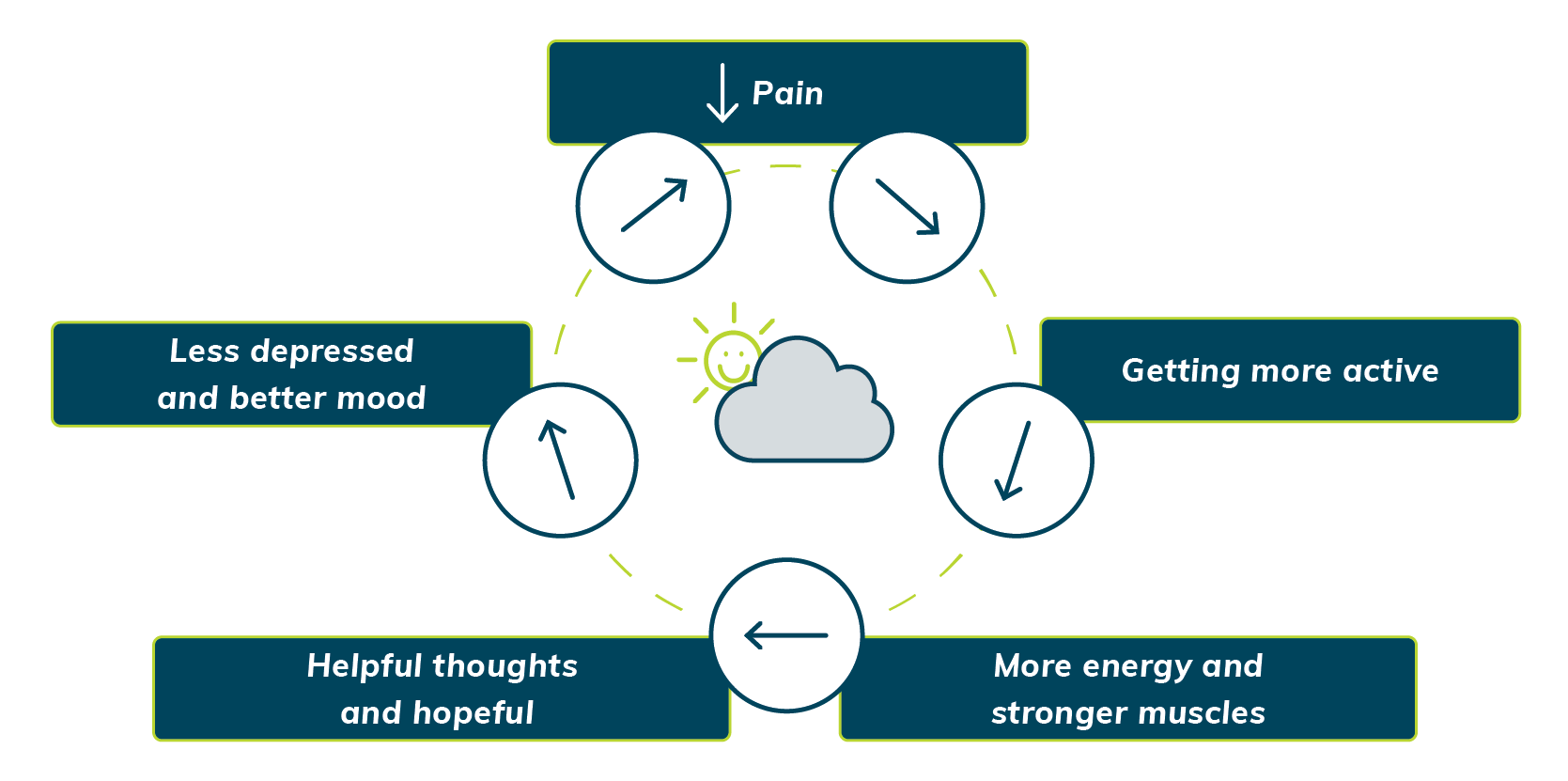
Cycle of depression
Depression makes you feel differently, can change the way you live your life and can make your pain worse, keeping you trapped in a cycle of depression and pain.
Think about the things in your life that keep you in the cycle of depression. When you know what these are you can start to work on them and turn the cycle around.
When you have chronic pain and a brain injury you can also start to feel down, stop doing things and enjoy life less. This can lead to feeling low, unhappy, hopeless and sometimes depressed.
Depression makes you feel differently, but it can also change the way you live your life, that is, what you do each day, your relationships, your thoughts and the way you feel about yourself. All these changes can make your pain and depression worse, and can keep you trapped in a cycle of depression and pain.

This figure shows the cycle of depression and pain. When you feel pain this leads to being less active and resting more, which leads to low energy, fatigue and causes muscles to weaken, this leads to unhelpful thoughts and feeling hopeless and overwhelmed, leading to depression and low mood, and then more pain and the cycle continues.
It can be helpful to think about the things in your life that keep you in the cycle of depression. When you know what these are, you can start to work on them and turn the cycle around.
Take some time to think about each of the different parts of the cycle and how this has been working in your life.
Read the example in the Cycle of depression guide and then have a go at writing down how the cycle of depression has played out in your life in the My cycle of depression worksheet. Put in lots of details so that the cycle is meaningful to you and your situation.
Turning around the cycle of depression
By making a few changes, you can turn around the cycle of depression. When you start to be more active, you can then slowly build up your energy levels and the strength of your body. This helps to build your confidence and it is easier to have more helpful thoughts.
Over time, you will feel less depressed and boost your mood. This means that your pain becomes more manageable, so you can slowly become more active. Now you have turned the cycle around and your life is back on track!
Look at the figure below to see how this works.

This figure shows how to turn around the cycle of depression and pain. When you feel less pain you get more active, making more energy and stronger muscles, your thoughts become helpful and hopeful, this leads to feeling less depresses and a better mood, which helps to further lessen your pain, which helps to keep turning around the cycle.
How are you going to turn around your cycle of depression?
Look at the parts of the cycle that you could work on to improve your mood and your pain. Think of the things that you can start to change to get this cycle turned around. It does not matter where in the cycle you start, it is just important to get started. Begin with small changes, like going for a short walk or swapping your thoughts. When you keep doing these small things, in the long run, they can make a big difference to your feelings of depression and managing your pain.
Check out the example in the Cycle of depression guide and then have a go yourself at turning around the cycle of depression in the My cycle of depression worksheet and learn to Be Pain Smart.